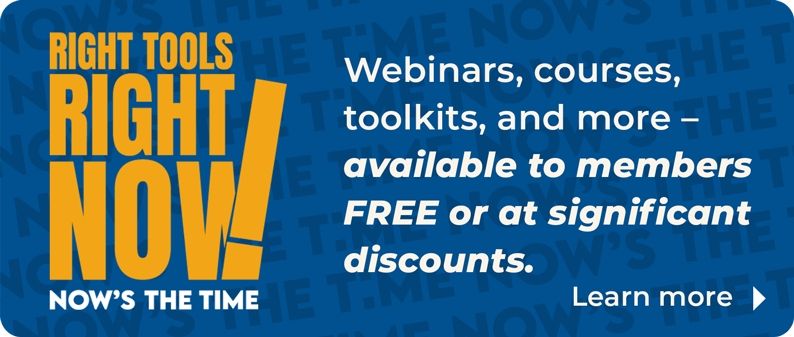The United States is in the midst of a historic housing crisis.
Each day, TV news lead stories, newspaper headlines and online news sources tell the stories of homeownership out of reach for the middle class, rents doubling in a few years in hot markets and the working poor teetering on the brink of homelessness as millions spend more than half of their gross income on housing alone.
Planners, long before the days of super computers and instant internet access to reams of data, have tried to create land-use policy that meets the needs of a diverse population.
A Housing Needs Assessment is a tool that can turn data into a vivid picture of what a community needs now.
A Housing Needs Assessment is a tool that can turn data into a vivid picture of what a community needs now, and in the future, for the core basic need of all humans — safe, affordable, well-located housing.
A Housing Needs Assessment typically involves compilation and evaluation of specific demographic data, economic characteristics and trends, current housing inventory and characteristics, government policies and incentives, and the adequacy and availability of selected community services.
The assessment concludes with quantifying the number of housing units needed in the market by specifics such as:
- Rentals vs. for-sale units
- Price point
- Number of bedrooms
- Market segment (percentages of housing types needed by families, seniors, young professionals, people with disabilities, etc.)
The assessment typically provides recommendations on how to achieve certain housing goals.
The assessment typically provides recommendations on how to achieve certain housing goals and will provide recommendations on potential housing policy initiatives that would benefit the local housing market.
In instances where a community has available land that could be used to develop new housing or the adaptive reuse of existing structures, site-specific analysis can also be included as part of an overall Housing Needs Assessment.
An analysis can even be conducted on submarkets or select neighborhoods within the subject community. Data sorts can be customized to pave a pathway toward meeting the specific needs of a community.
The American Planning Association (APA) published a two-part series that is virtually the bible on data-driven housing assessments and action plans. It was authored by Mel Jones, a research scientist at the Virginia Center for Housing Research.
The APA memo guides users toward meaningful data from the U.S. Census American Community Survey, U.S. Department of Housing and Urban Development (HUD) Consolidated Housing Affordability Strategy, and U.S. Bureau of Labor Statistics.
In regard to housing affordability, Jones’ APA work explains that HUD coined the term “cost burdened” to describe families who pay more than 30 percent of their income for housing. Planners are advised that cost-burdened households may have difficulty affording necessities such as food, clothing, transportation and medical care.
HUD identifies families who pay more than 50 percent of their income for housing as severely cost burdened. The agency notes households in this category may have to make difficult choices between housing and other basic necessities.
Jones tossed out a data analysis 101 caution. She said some public officials might interpret stats that show 30 percent of their community is cost burdened and 20 percent are severely cost burdened — add them together — and state half the community is burdened when it comes to housing costs. “The severely cost-burdened are also in the cost-burdened numbers, so it’s a mistake to add the two together,” she said.
“Numbers are very interesting to people in terms of communicating the problem and bringing some sense of need
to do something about it,” Jones added. “But use your intuition and knowledge of your own community. In small and rural areas, a census tract may take in such a large area that the block-level data is not totally reliable.”
Jones encourages planners and government bodies to take action once they understand the housing-needs data.
The more information a locality can provide to developers about where residents want to see housing built, the more likely developers are to respond to the community’s plans and goals.
“Reducing uncertainty and risk reduces costs for developers. If they know that a locality needs a particular type of housing and that the local government is going to support their efforts to build it, it is very likely that the locality can achieve its housing goals. The more information a locality can provide to developers about where residents want to see housing built, what type of housing they are looking for, what they want it to look like, etc., the more likely developers are to respond to the community’s plans and goals,” the APA report states.
The APA guide suggests that municipalities create relationships with developers that have experience doing Low Income Housing Tax Credit deals, to deliver affordable housing.
“Sometimes builders are not delivering what the community needs. Statistics can help demonstrate the demand to them,” Jones said. “We hear all the time that builders want to build it, [smaller units, more affordable/entry level housing] but cannot get financing. Data can help planners and housing authorities to partner with local banks willing to help — the numbers can show the reality of what kind of housing is needed.”
Jones said land banks, housing trust funds, and land trusts are the three best tools for creating affordable housing and preserving land to accommodate it.
“Housing is not just the four walls. It is your connection to community, job opportunities, family, social networks,” she said. “Housing is your foundation for everything — affordable, quality, stable, safe housing is the way to cultivate a good citizenry.”
Brian Loughlin, director of planning and urban design at New York-based Magnusson Architecture and Planning, is the chair of the APA’s Housing and Community Development Division.
“I’m based in New York and the good news is the city of New York makes a tremendous amount of money-making data digestible,” he said. “It makes data accessible to planners — down to the census block — so it can be used as a tool to support the type of housing that is needed: so, we are not just relying on what the market is building.”
Loughlin said the APA is trying to help smaller municipalities, the ones that don’t have the resources of huge cities and counties, to have tools that demystify the process of interpreting big data.
“We want all communities to be able to get a quick snapshot of what their housing landscape looks like, so they can better address the housing crisis,” he said.
Loughlin said a major issue holding back impactful planning solutions is that programs and legislation stop at city/county boundaries.
“Housing is a regional thing. New York City housing depends on not just the city but New Jersey, Connecticut, Long Island — we really need to approach things from an MSA [Metropolitan Statistical Area] to create regional solutions,” he said. “The problems/challenges for everyday people — transportation, economic, housing — are regional.”
Loughlin said data is proving that affordable housing is located farther and farther from job centers — creating long commutes, traffic congestion and a waste of urban core infrastructure in place to serve density.
Data can help a city evaluate housing initiatives on the basis of affordability, accessibility and appropriateness.
He said data can help a city evaluate housing initiatives on the basis of affordability, accessibility and appropriateness. Accessibility means access to jobs and services via walking or transit. Appropriateness looks at the kind of housing needed. Often there is a gap in Missing Middle housing.
Missing Middle housing includes duplexes, triplexes, fourplexes, courtyard apartments, bungalow courts, townhouses, multiplexes, and live/work units.
“The Missing Middle usually is more affordable than a single-family home or high-rise apartment. People who are cost burdened can move into it. Once they can afford other housing, they can move on and that frees up more workforce housing,” he explained.
The Use of Data Helps REALTORS® Reach Underserved Market Segments
It’s not just price and location that makes a property desirable. In the Seattle area, REALTORS® Barry Long, of Marketplace Sotheby’s International Realty and Tom Minty, of John L. Scott Real Estate, have teamed up to use data to address a long-underserved market segment — people with disabilities.
Every different human being is looking for a house that fits their unique needs.
Centers for Disease Control (CDC) statistics find that up to one in four people experience some level of disability. But HUD surveys have found, less than one percent of all housing is move-in ready for wheelchair users, and virtually all of that tiny one percent is newly built multifamily housing.
Long, who “motorcycled myself into using a manual wheelchair 31 years ago,” got so interested in the power of databases that he scaled down decades of success as a motivational speaker to become a REALTOR® in his native King County. He gave a speech on how REALTORS® can identify accessible or potentially accessible homes and that led to him being matched with Minty.
“We approached the Northwest Multiple Listing Service (MLS) and they were great. They said ‘we don’t know how to do this, but we’ll give you access to the back end of our database,’” Long said. “We worked with the Northwest Universal Design Council and figured out how to break down a property — how to assess each room or element for accessibility. We researched what makes a house easier to use: if you use a manual wheelchair, power one, are blind, deaf, have autism, development disabilities or are neurodiverse.”
Long said they soon realized that accessibility wasn’t a hindrance, it was the very definition of residential real estate sales — that “every different human being is looking for a house that fits their unique needs.” Because Long has outfitted his own home to his needs, he knew that a simple check box on an MLS that a residence is “accessible” would be virtually worthless.
“So, we rated accessibility in terms of approach, entrance, living space, kitchen, bedroom, bathroom, utilities, elevator, ramps — we broke it down so a REALTOR® who doesn’t know anything about accessibility can find out the accessible aspects for a property,” he said.
A two-year process resulted in Form 6B — something all REALTORS® in Washington state have access to. Listing agents fill out the form and a buyer’s broker can download it. In the first 15 months the form went live, there were 158,000 listings in the state. Long was hoping 500 REALTORS® would use the form, but more than 4,000 did — a success story.
“More than 10,000 baby boomers are turning 65 every day for the next 11 years,” Long said. “Now we need to mainstream this so every MLS in the country lists features of homes that are accessible, adaptable and visitable.”
Accessible is move-in ready, adaptable is a home that can be readily adapted to accommodate a person with a disability and visitable is a home where a wheelchair user can visit a neighbor through a level entrance, one accessible bathroom and adequate space to move about the first floor.
Data Assessment Tools for Communities
There are a variety of resources around the country to help with housing needs. The Massachusetts Housing Partnership (MHP) has created a user-friendly resource that helps communities analyze housing data to assess what their community needs: https://www.housingtoolbox.org/assessing-needs
“A housing needs assessment is one of the first things we recommend because it focuses a community on understanding its housing needs and how it can use local, state and federal resources to build housing to meet those needs. MHP’s housing toolbox was developed to be an A-Z clearinghouse of resources we created to guide communities through the affordable housing development process, from understanding need to creating zoning to providing local funds to support affordable housing development efforts,” said Ruston Lodi, MHP director of public affairs.
MHP and its center for housing data team have created several tools that are exportable to large and small communities across the nation that are wrestling with the housing crisis:
- DataTown — housing and demographic information for all 351 Massachusetts communities, including a feature that allows users to compare communities.
- Transit-Oriented Explorer (TODEX) — allows users to review densities around all 261 Greater Boston transit stations, with a recommendation that 250,000 more units could be created if the overall unit average around these stations were boosted from the current six units per acre to 10 units per acre.
- Residensity (coming in Aug-Sept) — An expanded version of TODEX that makes it possible for users to do analysis and draw zoning districts for every parcel of land in Massachusetts.
The National Association of Counties (NACO) also has produced a Housing Needs Analysis and Community Engagement and Planning tool: https://www.naco.org/resources/featured/affordable-housing-toolkit-counties.
Along with the sobering stat that more than one third of all American households are burdened by housing costs, the tool has easy-to-follow solutions relevant nationwide. It has a plethora of advice on addressing affordability via planning and zoning, funding and financing, inter-jurisdictional partnerships and advocacy resources.
“American Rescue Act funds are $65.1 billion in direct funding to counties that are flexible in a way that allows county leaders across the nation to invest in housing needs assessment studies,” said Teryn Zmuda, NACO’s chief research officer/chief economist. “It gives leaders an opportunity to take the time to assess the complete landscape of their county. They can produce data that leads to housing stock, transportation, zoning, land use, ADUs (Accessory Dwelling Units), gap housing and other solutions.”
Zmuda said databases can share not only statistics, but examples to benchmark. She mentioned a Salt Lake County public-private partnership that created housing units with priority for people who needed disability-accessible units. The development was connected to a county service center. A Hennepin County (Minn.) project put local residents to work rehabbing homes, then those homes were put on the market as affordable housing for families.
“Pick up the phone and call a county that solved something you are working on,” she said, noting data must always be combined with a firm knowledge of local needs and traditions as well as innovative ideas borrowed from peer county success stories.















